What we´re reading…
This month’s key articles selected by Ryan Chadha, Prashant Bhangui, Uzung Yoon, David Victor, Felipe Alconchel, and Tamer Shaker.
Transplantation
Guidelines for Perioperative Care for Liver Transplantation: Enhanced Recovery After Surgery (ERAS) Society Recommendations
Enhanced Recovery After Surgery (ERAS) is a multimodal, evidence-based, program of care developed to minimize the response to surgical stress, associated with reduced perioperative morbidity and hospital stay. This study presents the specific ERAS Society recommendations for liver transplantation (LT) based on the best available evidence and on expert consensus. Read more.
Transplantation Proceedings
Utility of Framingham Score for Optimizing Preoperative Evaluation Among Patients Undergoing Liver Transplant Evaluation
Cardiac testing of candidates for liver transplant (LT) requires balancing risks and benefits of cardiac procedures. The goal of this study was to evaluate the utility of the Framingham score (FS) for optimizing preoperative risk stratification for coronary artery disease (CAD). Read more.
Clinical Transplantation
A single dose of pre-operative pregabalin reduces post-operative opioid use after orthotopic liver transplantation
Multimodal pain management strategies including pregabalin (PGB) have been shown to reduce pain and opioid use after many types of surgeries. This was a single-center, retrospective study aimed to determine whether a single pre-operative dose of PGB reduces opioid requirements and post-operative pain after orthotopic liver transplantation (OLT). Read more.
Transplantation
Serum MicroRNA Transcriptomics and Acute Rejection or Recurrent Hepatitis C Virus in Human Liver Allograft Recipients: A Pilot Study
Acute rejection (AR) and recurrent HCV (R-HCV) are significant complications in liver allograft recipients. Noninvasive diagnosis of intragraft pathologies may improve their management. Read more.
Hepatology
Recurrence of primary sclerosing cholangitis after liver transplant in children: an international observational study
Recurrent primary sclerosing cholangitis (rPSC) following liver transplant (LT) has a negative impact on graft and patient survival; little is known about risk factors for rPSC or disease course in children. Read more.
Liver Transplantation
Statin therapy and the incidence of thromboembolism and vascular events following liver transplantation
Statin therapy may reduce the risk of venous thromboembolism (VTE), which may impact solid organ transplant outcomes. We evaluated the incidence of VTE and other complications after liver transplantation stratified by hyperlipidemia status and statin use using a retrospective cohort study approach from a high-volume liver transplant center. Read more.
Transplantation
Postrecurrence Survival After Liver Transplantation for Liver Metastases From Neuroendocrine Tumors
Liver metastases from neuroendocrine tumors (NETs) is an accepted indication for liver transplantation (LT). Despite strict patient selection, post-LT recurrence is observed in 30-50% of cases. Postrecurrence survival is poorly investigated as well as factors influencing postrecurrence outcomes. Read more.
American Journal of Transplantation
Sleeve gastrectomy prior to liver transplantation is superior to medical weight loss in reducing posttransplant metabolic complications
Strategies to optimize the management of obesity-related metabolic complications after liver transplantation (LT) are needed. We examined the effect of pre-LT sleeve gastrectomy (SG), as compared to medical weight loss (MWL), on post-LT outcomes. This is a cohort study of adults (≥18 years) with medically complicated obesity who were eligible for pre-LT SG and underwent LT from January 1, 2006 to June 1, 2016. Read more.
Clinical Transplantation
Magnetic resonance imaging-derived proton density fat fraction (MRI-PDFF) is a viable alternative to liver biopsy for steatosis quantification in living liver donor transplantation
This study aimed to investigate whether magnetic resonance imaging-derived proton density fat fraction (MRI-PDFF) can be a viable noninvasive alternative to liver biopsy for the quantification of living liver donor steatosis. Hepatic steatosis for 143 donors was graded by MRI-PDFF. Read more.





